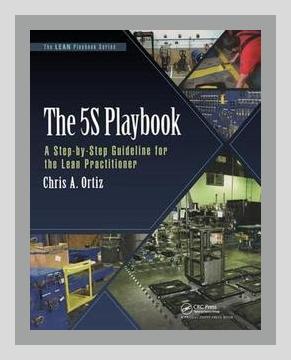Entrepreneurship and StartupsLean Startups
**
Introduction
Chris Ortiz’s “The Lean Office” offers a blueprint for applying Lean methodologies to office environments with the same success traditionally achieved in manufacturing settings. The book emphasizes enhancing efficiency, reducing waste, and promoting continuous improvement in office workflows. Ortiz presents a compelling argument that Lean principles can adapt to varied contexts, including administrative and office settings, thus proving their universal applicability.
Overview of Lean Principles
Lean principles, at their core, revolve around delivering value to the customer by minimizing waste and maximizing efficiency. Ortiz highlights the core Lean principles:
- Value Definition: Identifying what constitutes value from the client’s perspective.
- Value Stream Mapping: Understanding the current workflow to pinpoint inefficiencies.
- Flow Creation: Ensuring smooth, uninterrupted workflow.
- Pull Production: Services and products are produced based on customer demand.
- Perfection: Continuously improving processes for optimal performance.
1. Identifying Waste in Office Environments
Ortiz categorizes typical office wastes into several types: overproduction, waiting, transportation, extra processing, inventory, motion, defects, and underutilized talent.
Example: In an office setting, overproduction could mean preparing reports that are never read, while defects could involve errors in data entry that later require corrective actions.
Action: Conduct a waste audit to identify non-value-adding activities. Use techniques such as Gemba walks (observing the workstation with a purpose of identifying inefficiencies) to spot waste.
2. Value Stream Mapping (VSM)
Ortiz emphasizes the importance of Value Stream Mapping to visualize processes and identify bottlenecks.
Example: An insurance company used VSM to identify delays in the claim processing cycle. They discovered that manual handoffs between departments caused significant delays.
Action: Map out the current state of your processes. Identify and eliminate bottlenecks. Engage all team members to identify inefficiencies collectively.
3. 5S Methodology
5S stands for Sort, Set in order, Shine, Standardize, and Sustain. This methodology is a lean tool for organizing and maintaining the workplace in a manner that enhances efficiency and reduces waste.
Example: A law firm’s cluttered document storage was streamlined by applying 5S, resulting in quicker retrieval times and a tidier workspace.
Action: Implement the 5S steps. Begin by sorting unnecessary items, setting remaining items in order for easy access, shining (cleaning), standardizing the workplace setup, and cultivating the habit to sustain these improvements.
4. Standardized Work Protocols
Consistency in tasks is crucial to eliminate variability and enhance quality.
Example: By establishing standardized procedures for client onboarding in a consulting firm, Ortiz shows how reduced variability immediately improved efficiency and client satisfaction.
Action: Create and document standardized work procedures for repetitive tasks. Train employees on these standards and frequently review them for improvements.
5. Pull Systems and Just-in-Time (JIT)
In the office environment, pull systems ensure that work is only performed when there is demand, avoiding overproduction and excess inventory.
Example: A publishing company adopted a pull system for content creation, pushing out articles based on reader demand rather than arbitrary schedules.
Action: Implement a pull system by aligning team outputs closely with customer demands. Regularly adjust production schedules based on real-time demand.
6. Employee Involvement and Kaizen
Ortiz stresses the importance of involving employees in the continuous improvement processes (Kaizen).
Example: A customer service department implemented daily Kaizen meetings where employees discussed small, incremental changes. This led to reduced response times and higher customer satisfaction.
Action: Foster a culture of continuous improvement by organizing regular Kaizen meetings. Encourage employees to contribute ideas for improving their daily work processes.
7. Visual Management and Metrics
Transparency and visibility are crucial for understanding and improving workflow processes.
Example: A marketing agency used visual management tools like Kanban boards to track campaign progress, which enhanced team coordination and deadline adherence.
Action: Utilize visual management tools tailored to your office operations. Track key performance indicators and make this information visible to the entire team.
8. Lean Office Implementation Challenges
Ortiz addresses common challenges such as resistance to change and difficulty in maintaining momentum.
Example: Ortiz cites a financial services firm where initial resistance was mitigated through effective training and by showing quick wins to gain employee buy-in.
Action: Anticipate resistance and manage it through effective communication, training, and by demonstrating early success. Keep the team motivated by celebrating small wins.
9. Sustaining Lean Practices
Sustaining Lean improvements requires commitment and regular follow-ups.
Example: A software development company established a continuous training program and regular auditing of Lean practices to ensure they were sustained.
Action: Create a sustainability plan which includes continuous training, regular audits, and a feedback loop to keep track of progress and areas needing improvement.
10. Practical Tools and Techniques
Ortiz provides practical tools like checklists, templates, and software recommendations to aid Lean implementation.
Example: The book includes templates for standard work documents which helped a project management office streamline their reporting processes.
Action: Use provided tools and customize them to suit your office’s specific needs. Incorporate them into daily practices for consistency.
Conclusion
“The Lean Office” by Chris Ortiz demystifies the application of Lean principles in non-manufacturing environments through detailed explanations and numerous real-world examples. By systematically identifying waste, establishing clear processes, and engaging employees in continuous improvement efforts, offices can achieve significant gains in efficiency and productivity. The guidance provided is actionable, making it a valuable resource for anyone looking to implement Lean methodologies in an office setting.
By following Ortiz’s structured approach, professionals can transform their office operations, aligning them more closely with the principles of efficiency and value that define Lean methodologies.
